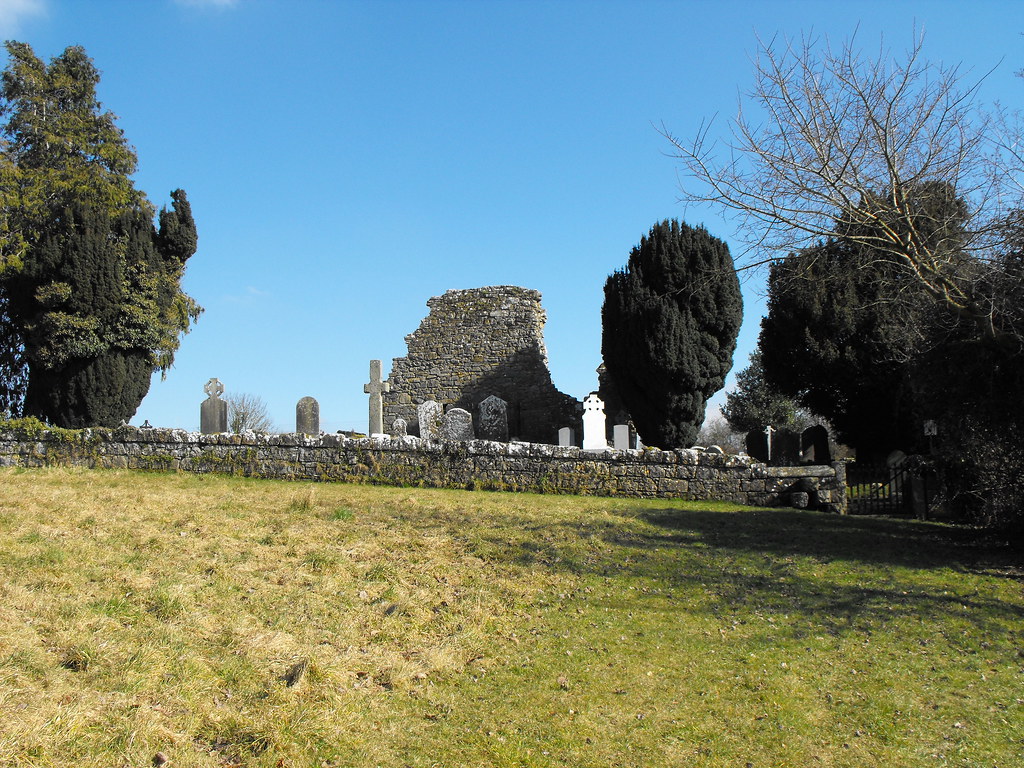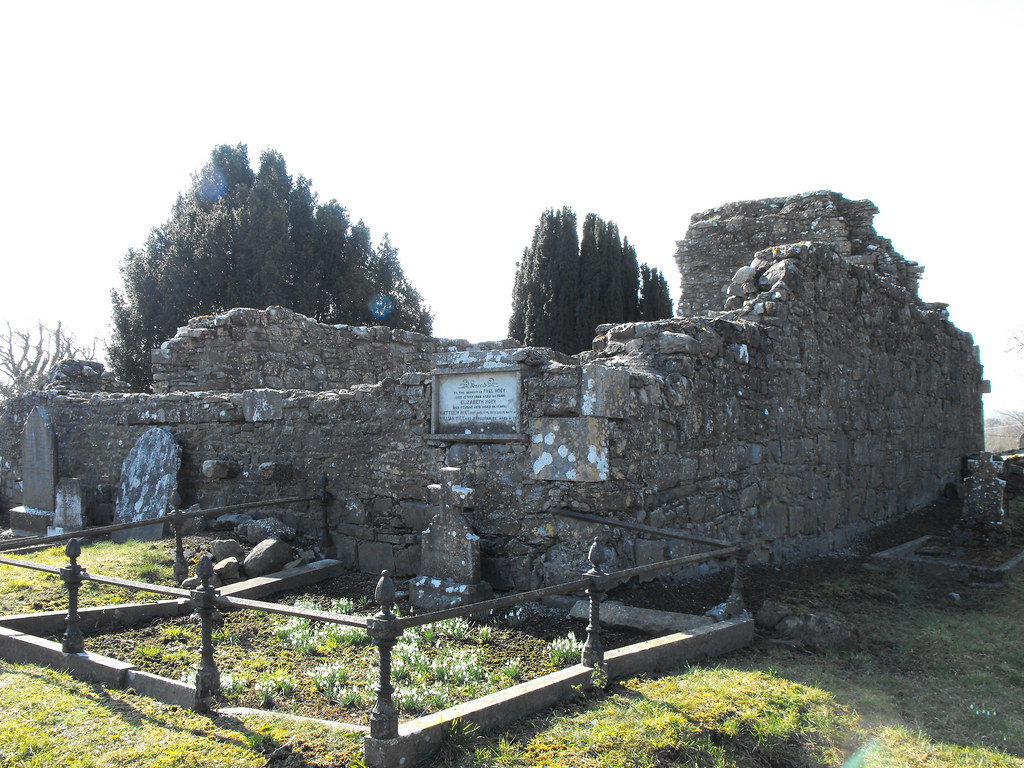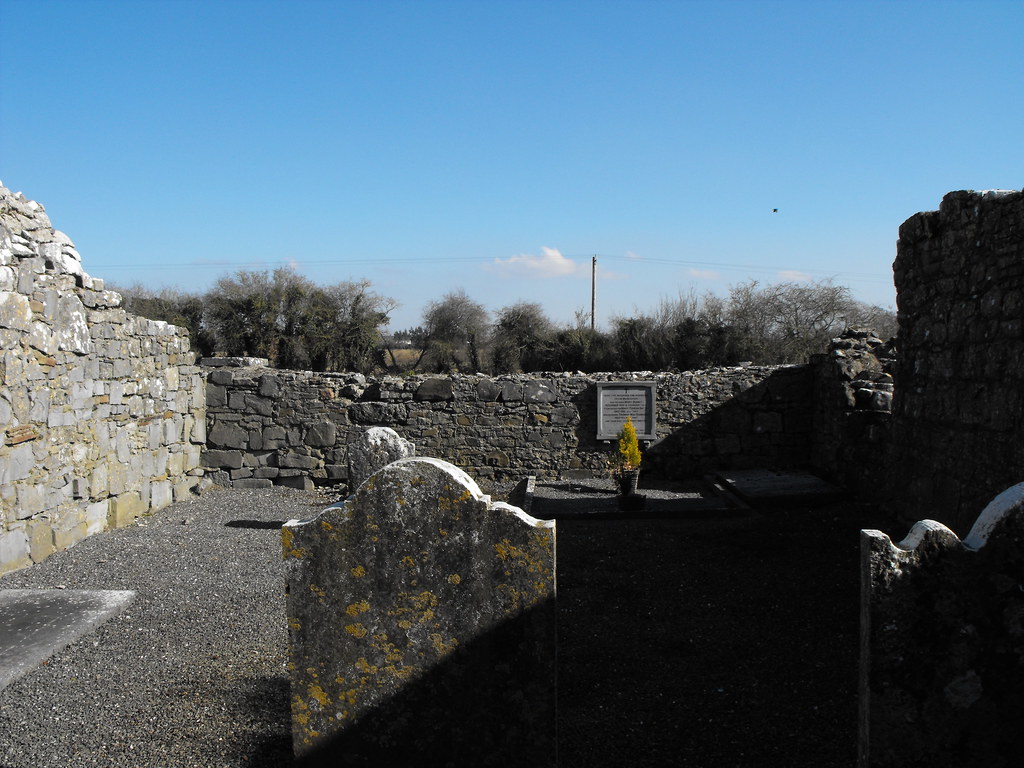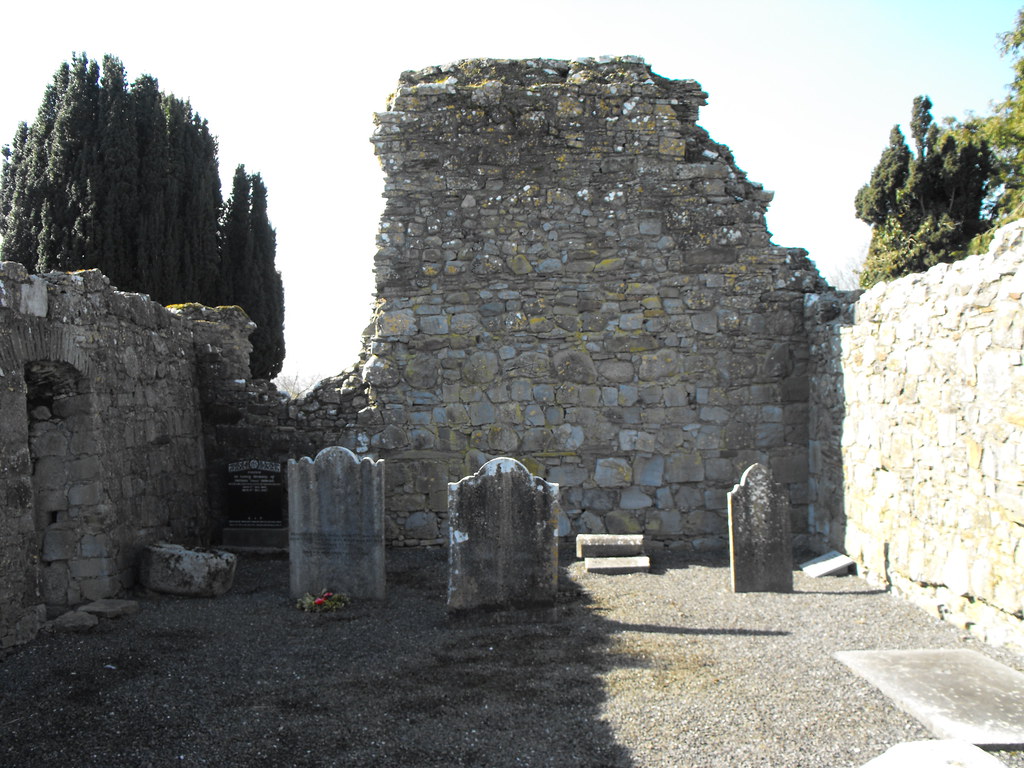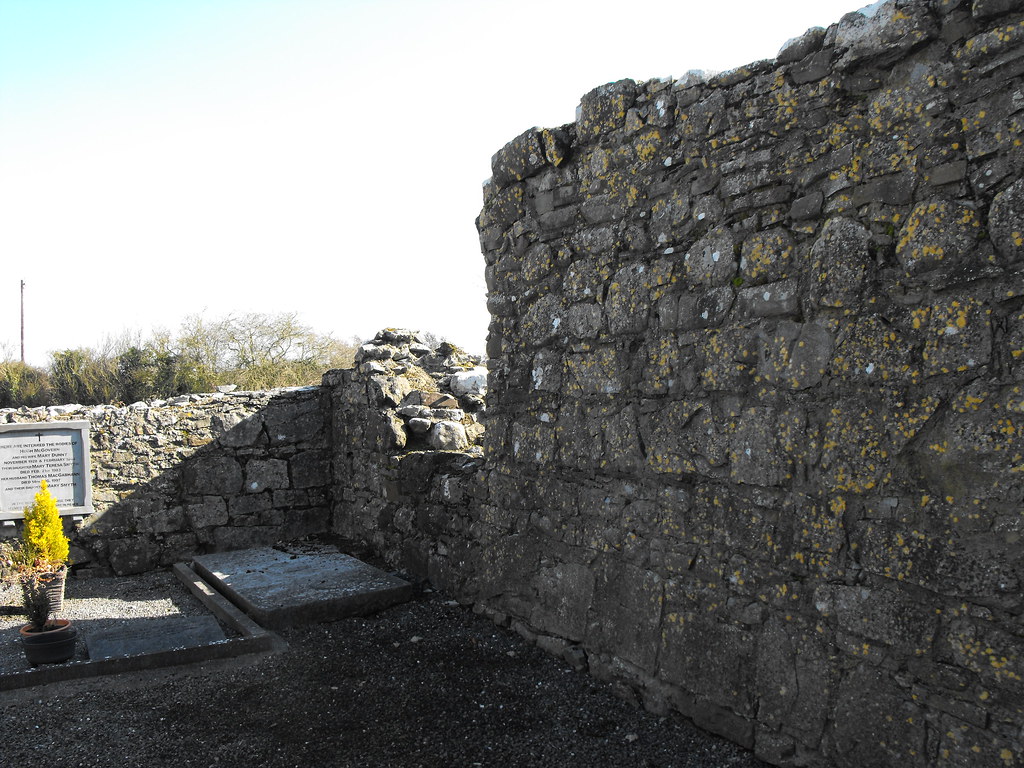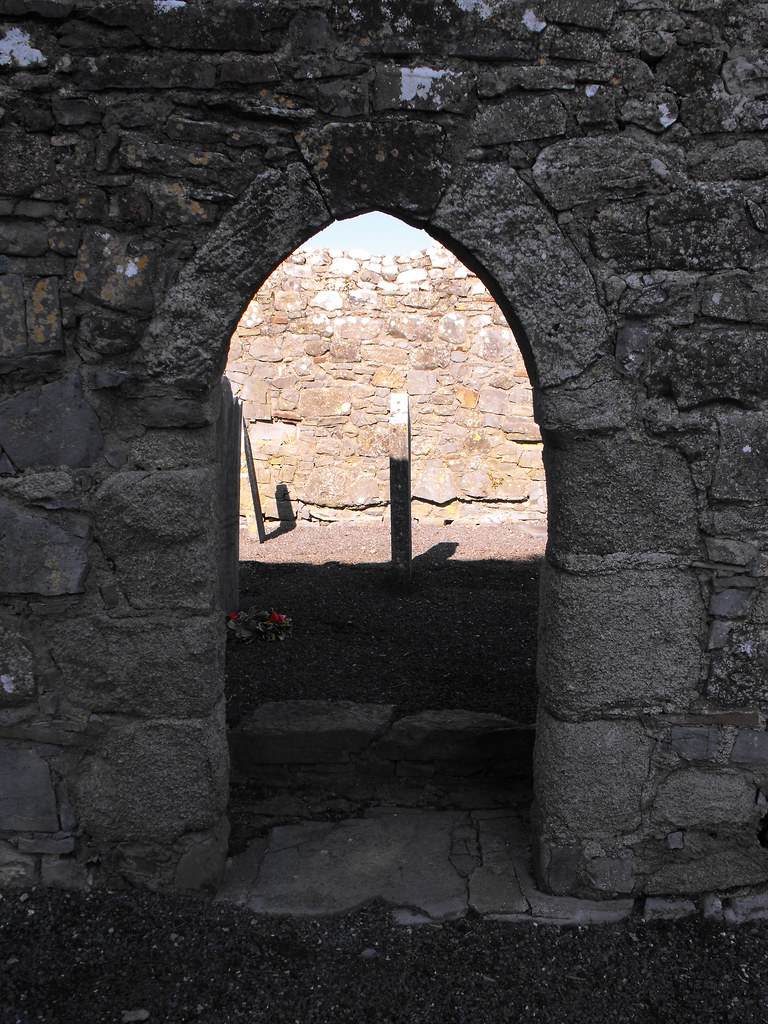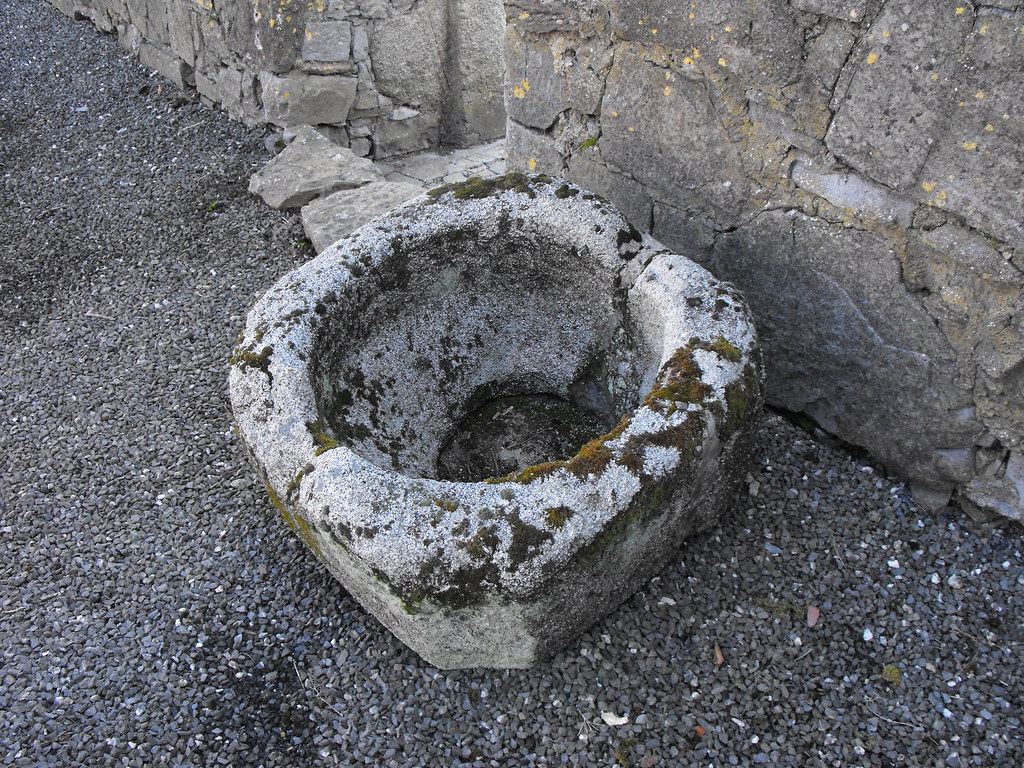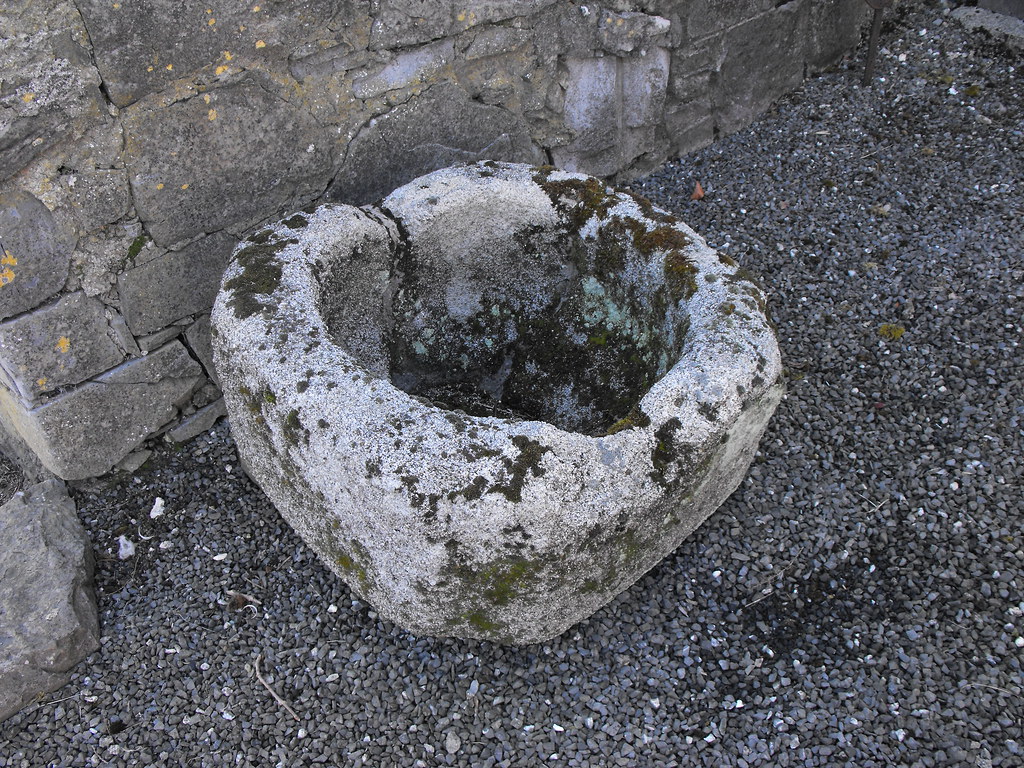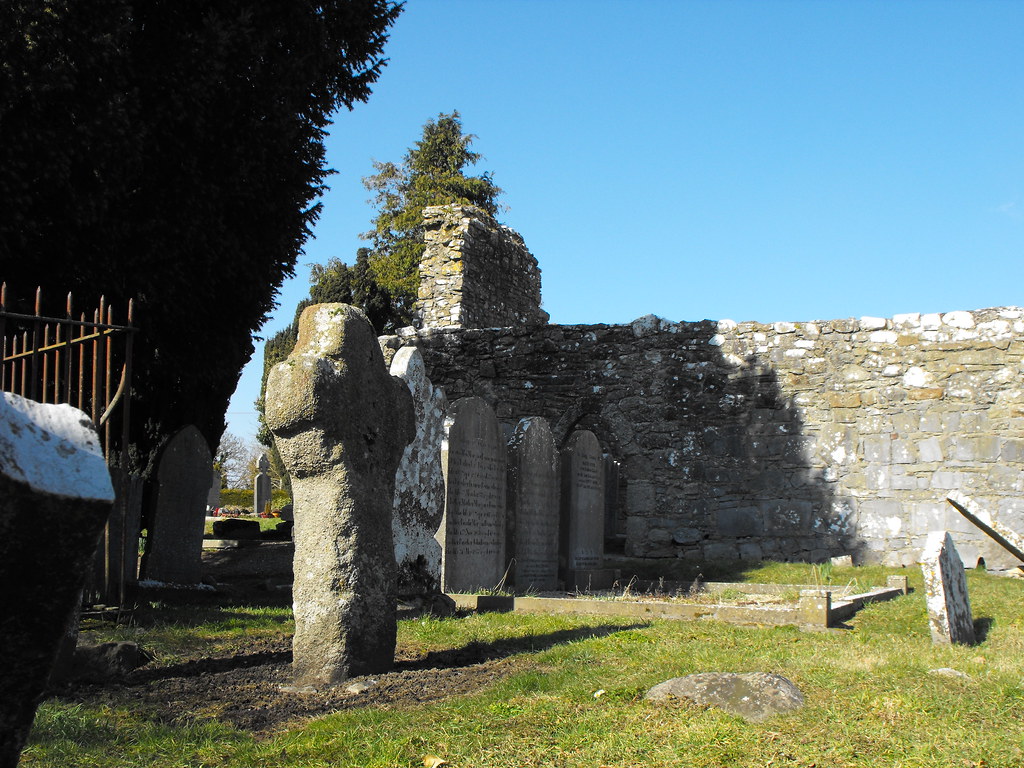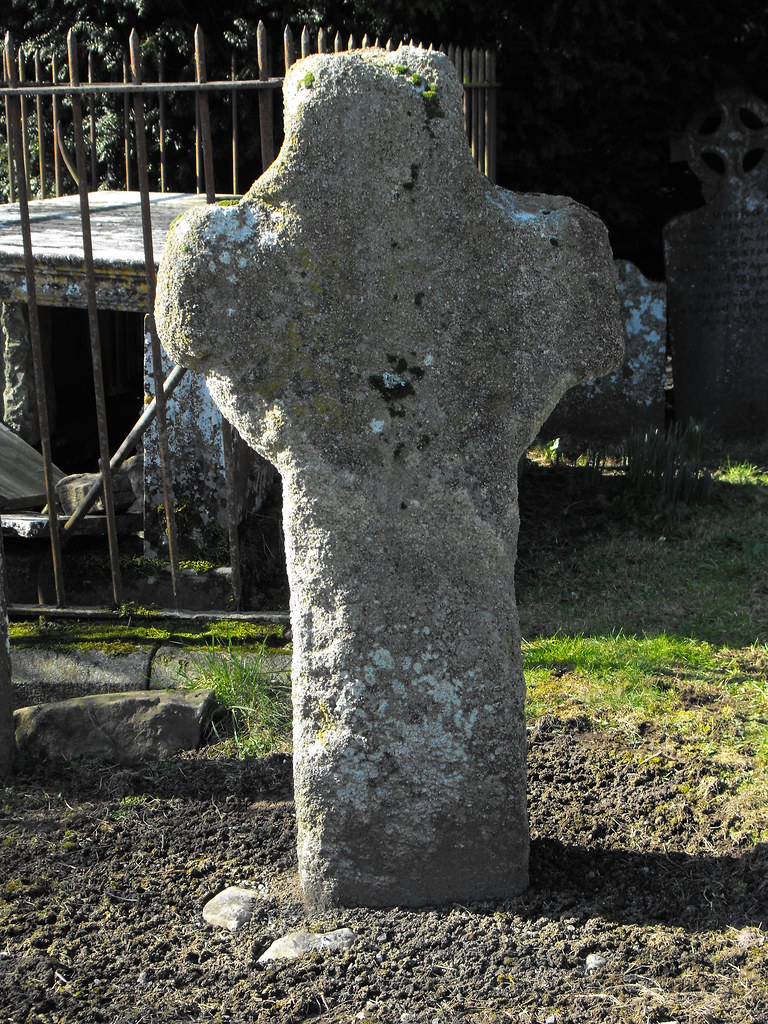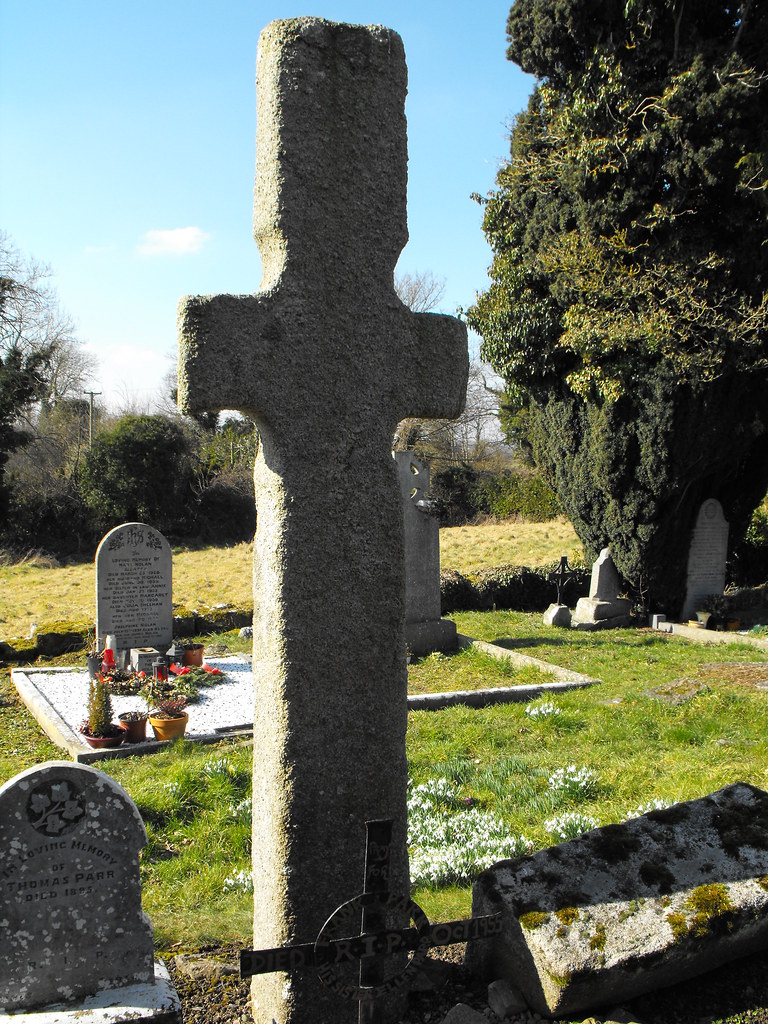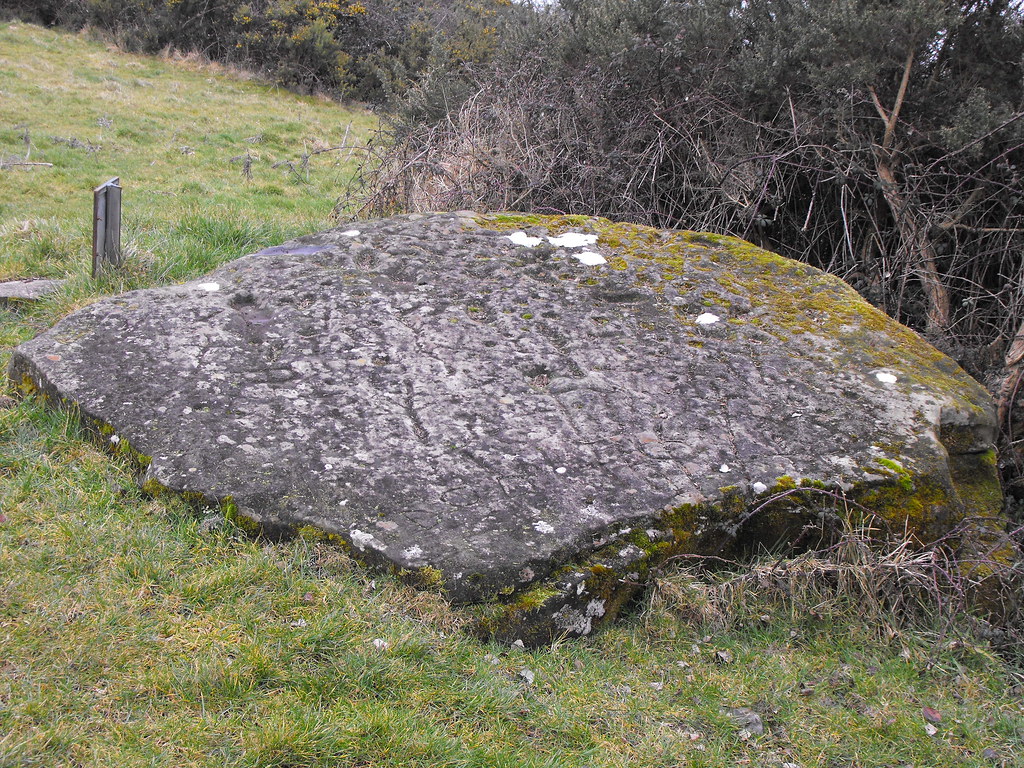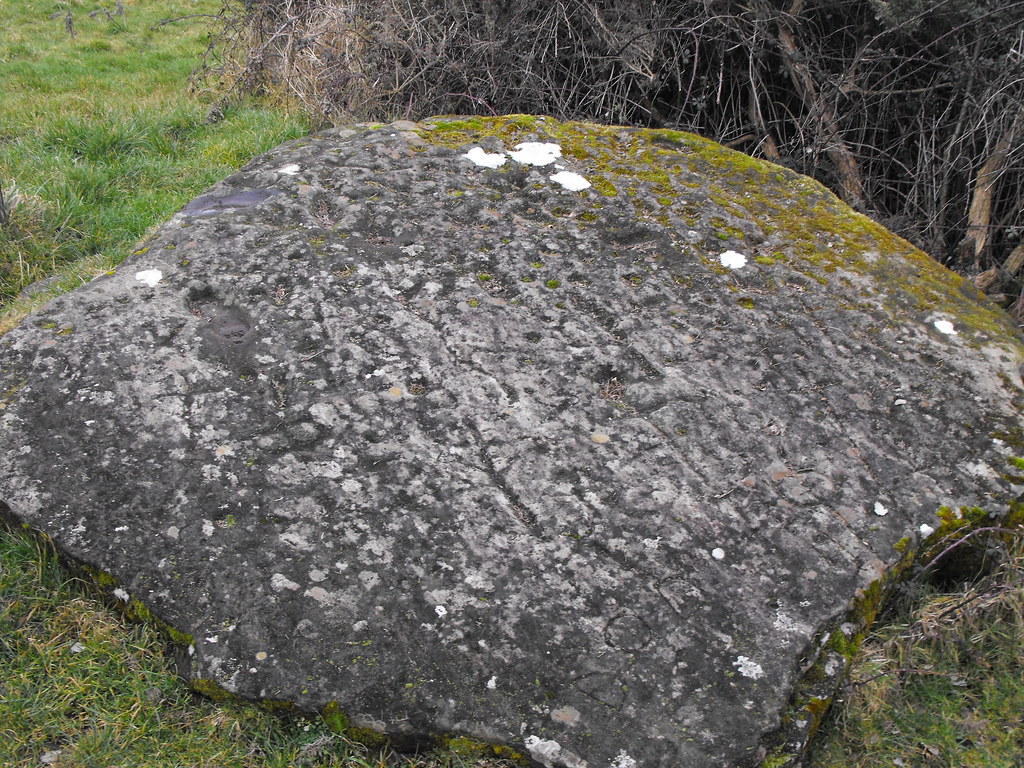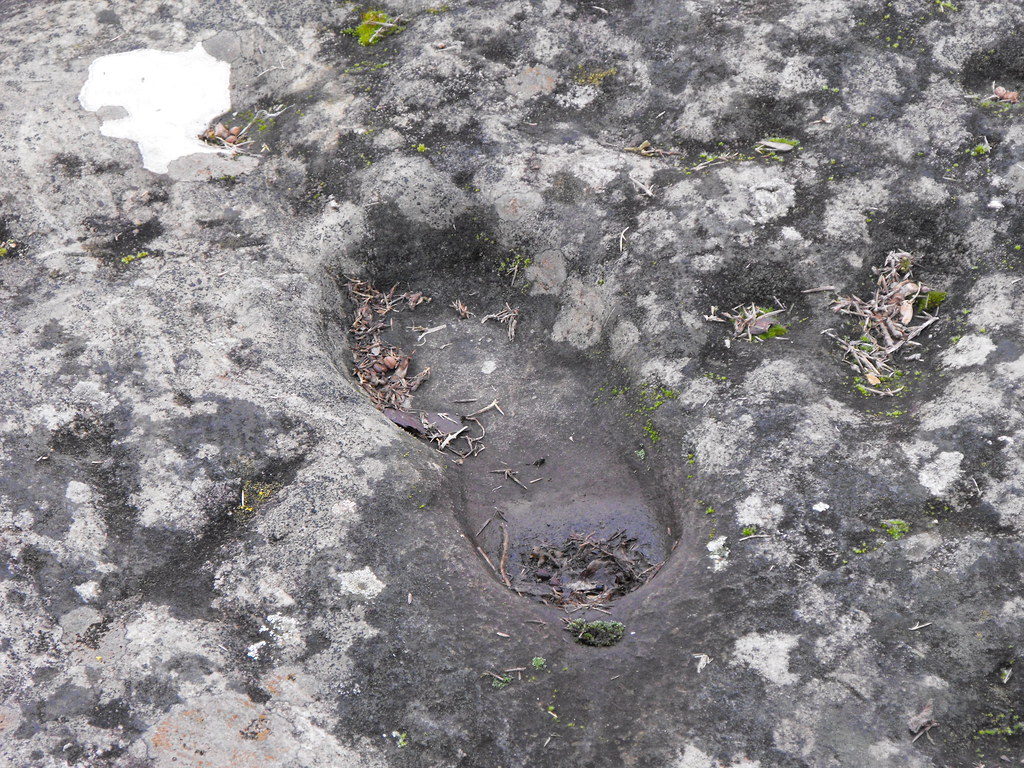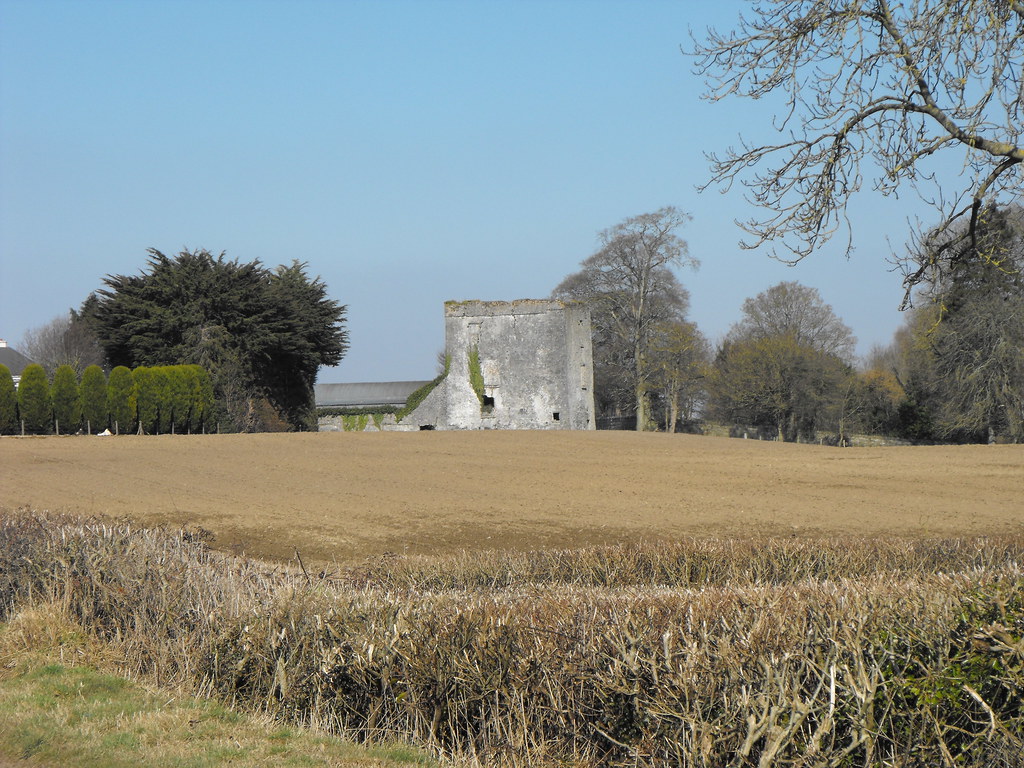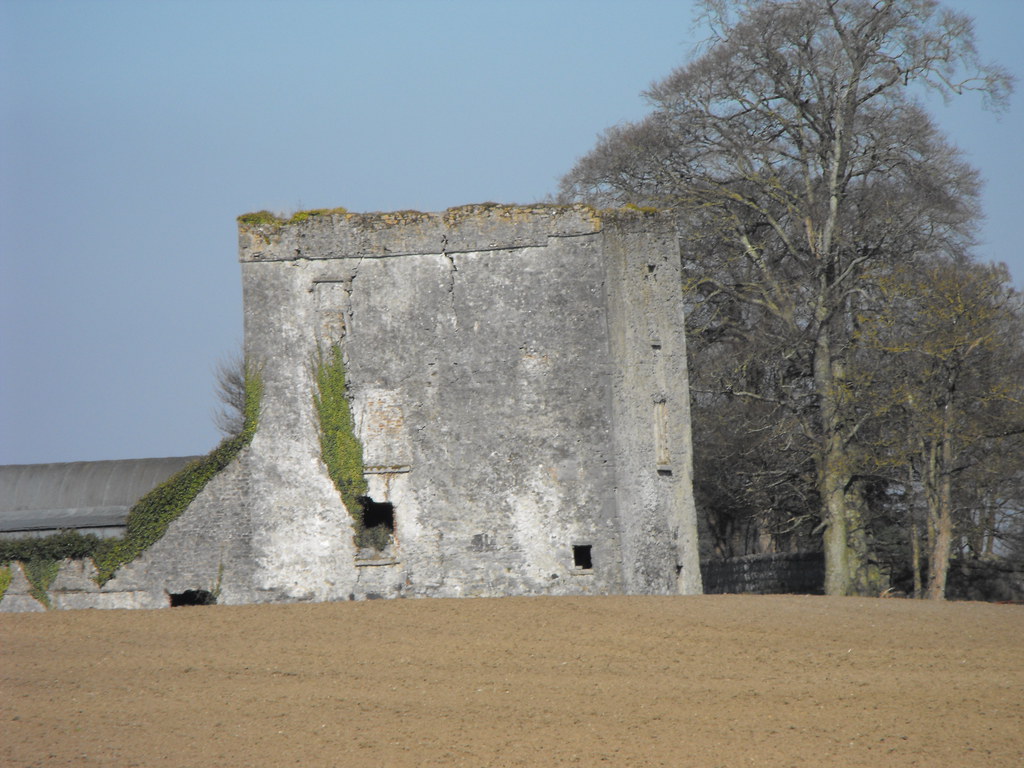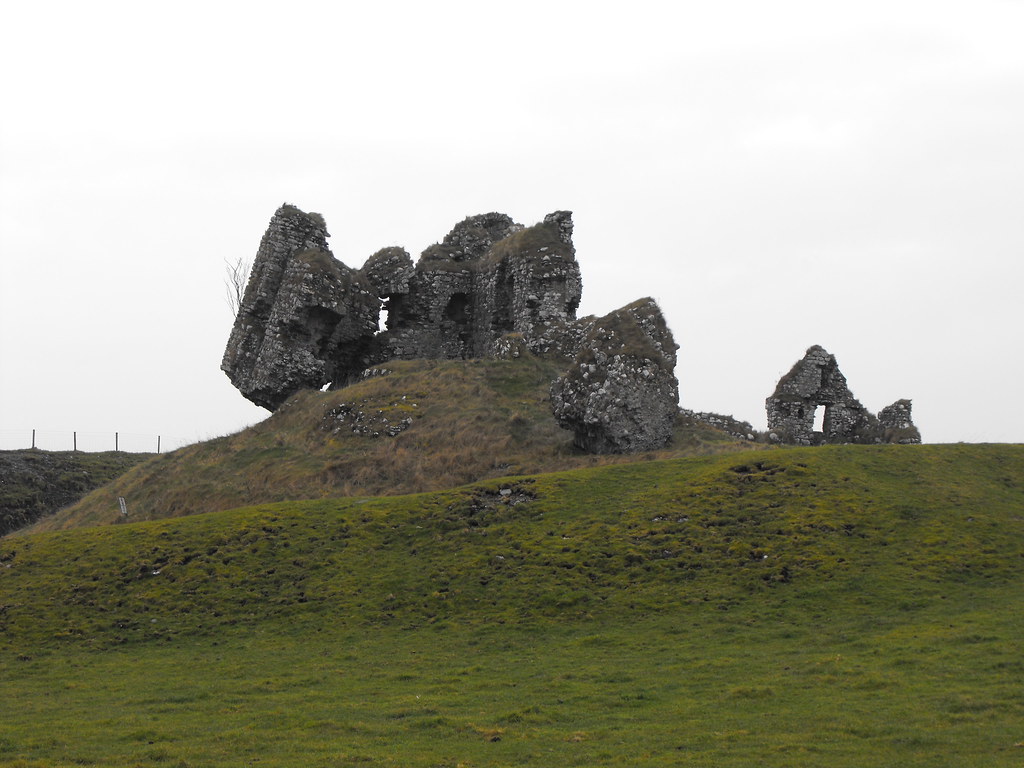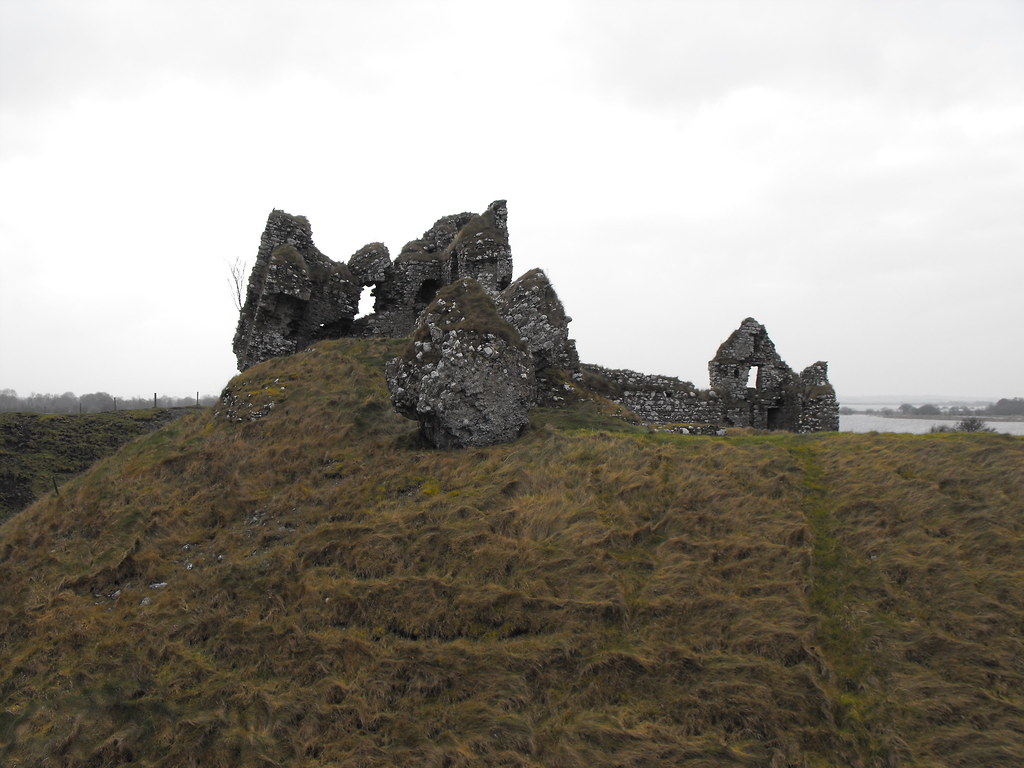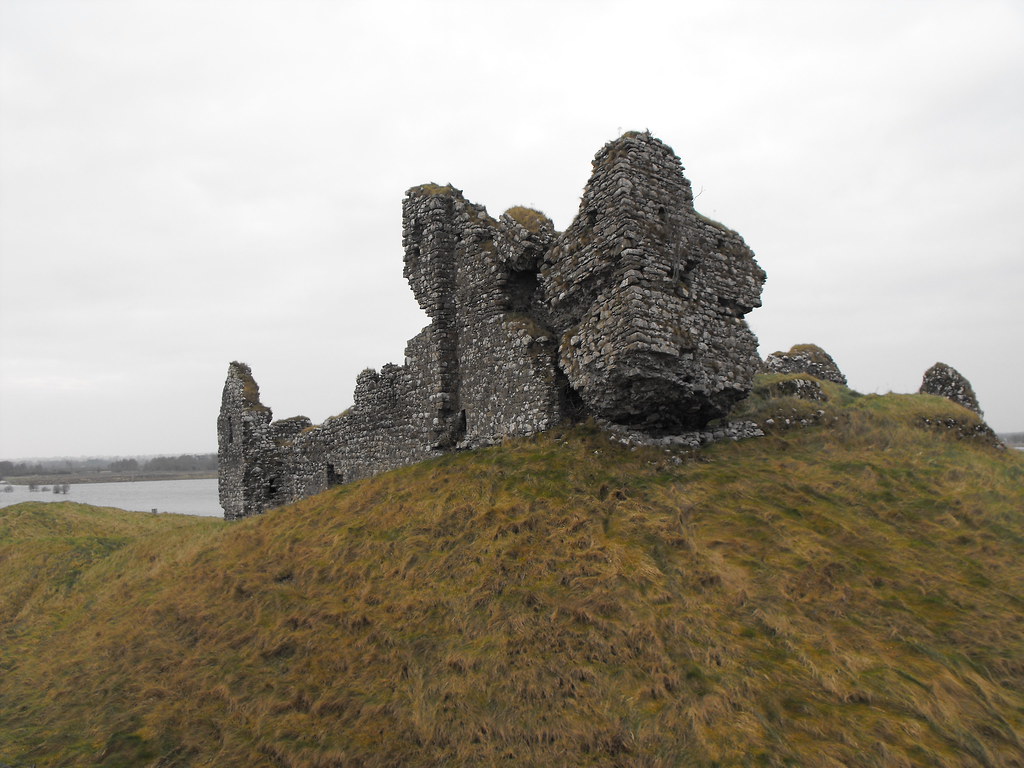Location – A few km north of Carlow town on the banks of the River Barrow.
OS: S 713 791 (map 61)
Longitude: 6° 56' 27.43" W
Latitude: 52° 51' 27.83" N
GPS: S 71327 79054 (Accuracy – 7m)
See map at the bottom of the page.
Description and History – The remains at Sleaty appear to be nothing out of the ordinary apart from the two early Christian crosses which betray its importance as the former residence of the Bishop of Leinster. This is a very early Christian foundation, of which only the two crosses remain. Associated with St. Fiacc the church is medieval in date, although some of the larger stones used in its construction may come from the earlier foundation. Large boulders were common in early Christian construction. The original monastery was on the other side of the river but when 60 monks died at the site (how I don’t know) it was moved to its present location. Aodh lived here in the 7th century who was one of the first biographers of St. Patrick. The last historical reference to the site is from 1055, after which the site lost importance.
OS: S 713 791 (map 61)
Longitude: 6° 56' 27.43" W
Latitude: 52° 51' 27.83" N
GPS: S 71327 79054 (Accuracy – 7m)
See map at the bottom of the page.
Description and History – The remains at Sleaty appear to be nothing out of the ordinary apart from the two early Christian crosses which betray its importance as the former residence of the Bishop of Leinster. This is a very early Christian foundation, of which only the two crosses remain. Associated with St. Fiacc the church is medieval in date, although some of the larger stones used in its construction may come from the earlier foundation. Large boulders were common in early Christian construction. The original monastery was on the other side of the river but when 60 monks died at the site (how I don’t know) it was moved to its present location. Aodh lived here in the 7th century who was one of the first biographers of St. Patrick. The last historical reference to the site is from 1055, after which the site lost importance.
The medieval church is largely ruined and a stone font (date unknown) sits inside. The smaller of the two crosses from the earlier foundation is roughly 1.5m high and is decorated with a rough ringed cross. It is badly eroded and barely visible now. The second cross is 2.8m high and is undecorated. I had seen photographs of this cross before and you can’t really appreciate its size until you see it for yourself.
This is a nice little site and well worth the trip.
Difficulty – Easy enough to get around but it is set back from the road and easy to drive by without seeing. There is no parking here.
For more ecclesiastical sites, click here.
For more sites in Co. Laois, click here.
The churchyard from the roadway.
View The Standing Stone in a larger map

